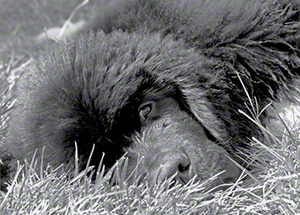It’s one of the big question for most new puppy owners: “when can my puppy sleep outside the crate?”
It’s a moment to look forward to, for it means your dog is housetrained and you no longer have to get up at all hours of the night to take her outside nor do you have to worry about cleaning up those cratetraining “accidents.”
So, exactly when can your puppy sleep outside her crate? Simple: when she’s ready. All humor aside, there are multiple factors to consider. Your dog’s breed is one. Larger breeds tend to mature more slowly than smaller breeds, and so while the general rule of thumb for dogs – a puppy can “hold it” for one hour per month of age, meaning a 6-month-old puppy should be able to go 6 hours before needing a bathroom break – is a good starting point, this is only a general rule of thumb. Some Newf puppies might indeed be able to make it all night by the time they’re 6 months; others may not be able to do so until they’re 9 or 10 months.
And while breed makes a difference, size variations may also play a role, so each individual dog will be different. Keep a close eye on how regularly your puppy needs to go out, slowly lengthening the time between bathroom breaks as she gets older, and if she’s not having accidents in her crate or the house, you’ll know you’re on the right track.
Don’t rush the process, though; many trainers recommend waiting a month or more after a puppy has started going all night with no in-the-crate accidents before actually allowing the dog to sleep outside the crate, just to avoid setbacks.
There’s something else to consider here besides the bathroom-break issue, and that’s chewing. Your puppy may be perfectly housetrained and able to go 7 or 8 hours without needing to go outside, but if she is still engaging in inappropriate chewing, the crate is the safest place for her to be at night. Even when it appears your dog is a candidate for “free sleeping,” some dog owners and trainers recommend that a puppy’s first few night outside the create be in a limited space (a puppyproofed bathroom, or your bedroom) until the puppy has fully demonstrated her ability to avoid getting into any trouble.
Finally, remember that dogs are “den” animals, and the crate –which of course should never be used for punishment – is, for most dogs, a place of safety and security. Many owners simply leave crates freely accessible to dogs 24/7, and many dogs happily take advantage, for their entire lives, of that convenient and comfortingly secure “den.”
Read More About Crate Training:
- Gearing Up for Puppy - Crates
- The Importance of Crate Training
- Crate Training for Safety and Comfort

